We’d like to say that SA roads are superior to those in Victoria but so far they’re just as bad, maybe worse! Much of the journey from Mt Gambier to Millicent was through much-needed roadworks, but onwards to Beachport they were dreadful.
Beachport is an attractive little town dotted with Norfolk Island pines and a jetty which stretches 772m into the bay, the second longest in SA after Pt Germein. It was commenced in 1878 and originally intended to be 1,219m long with a T head, but the construction was unsatisfactory and removed. The town also features several historic limestone buildings and the Pool of Siloam, a natural salt lake which is saltier than the sea.
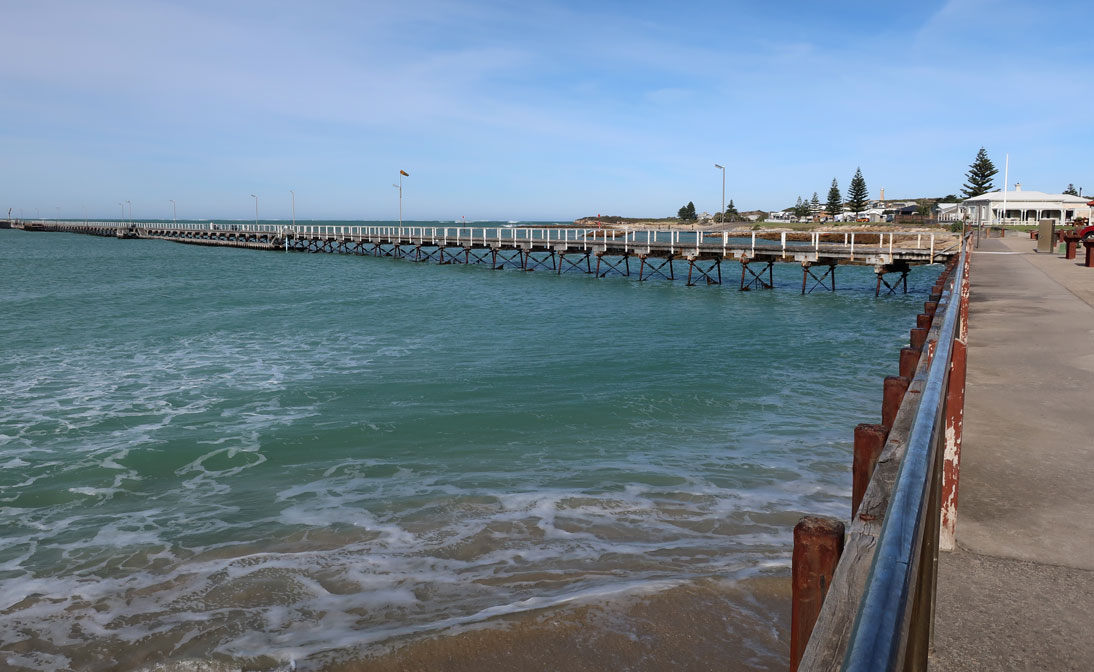


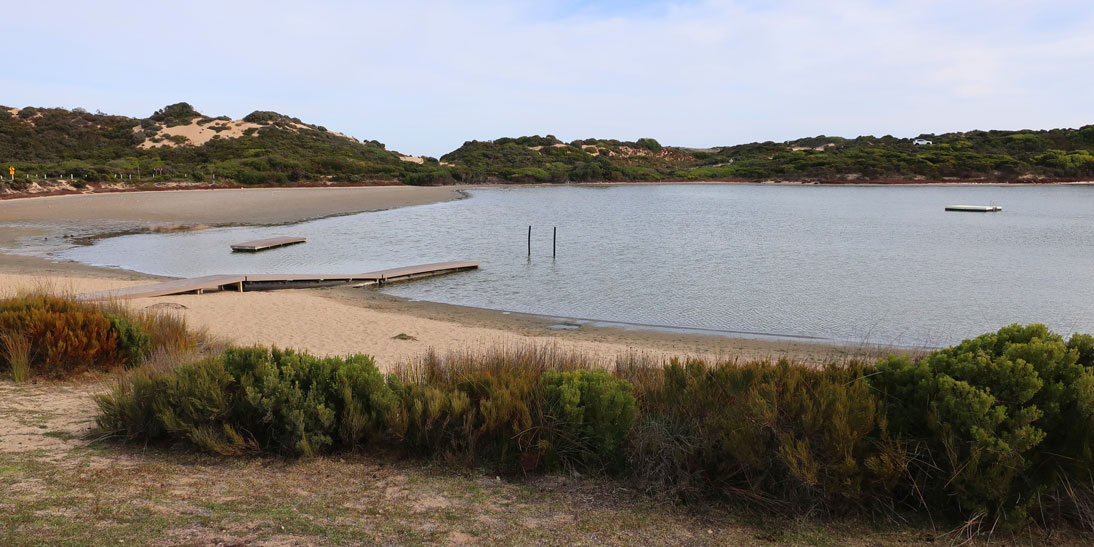
On the road between Beachport and Robe we stopped to view the Woakwine Cutting, an engineering feat dug by two men using heavy earthmoving equipment over a period of three years, from 1957 to 1960. The channel cuts through a range of hills between swampy farmland and a large lake. The cutting is 1km long, 3m wide at the bottom and 28.34m deep at the deepest point, and 276,000 cubic metres of material was removed in its construction.
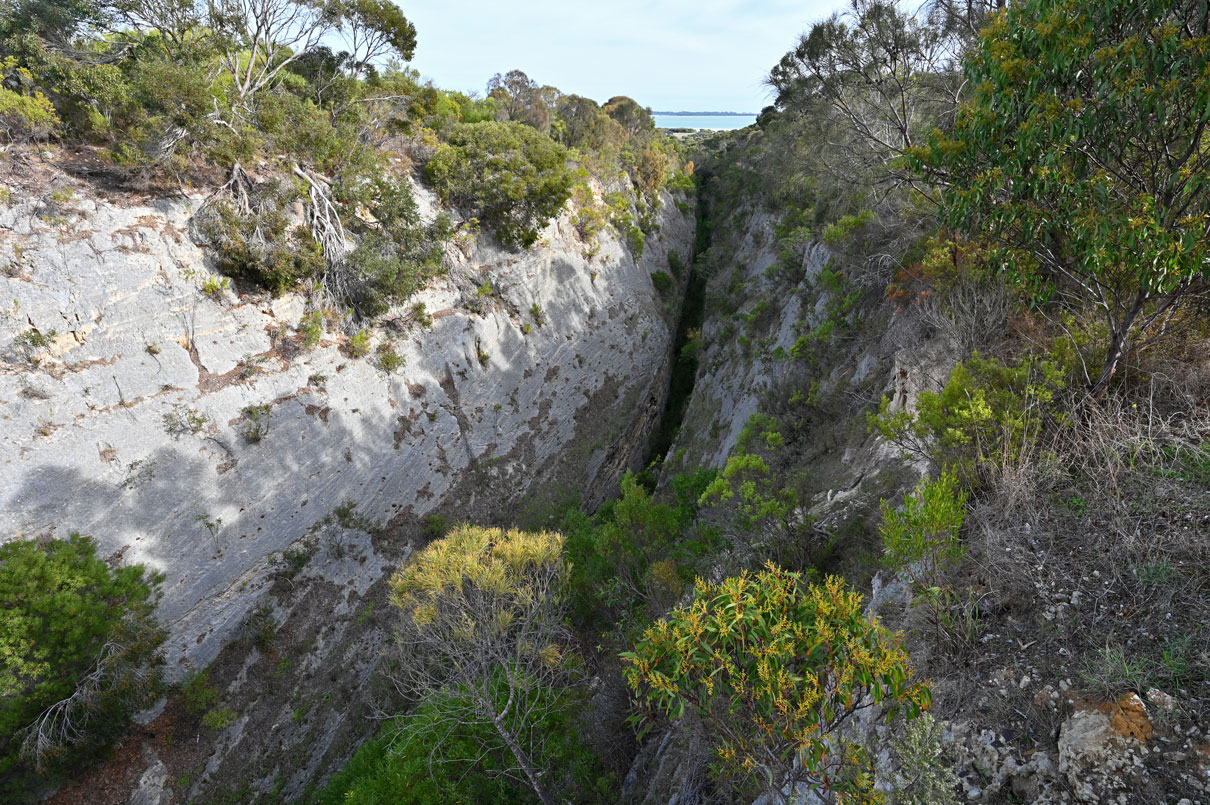
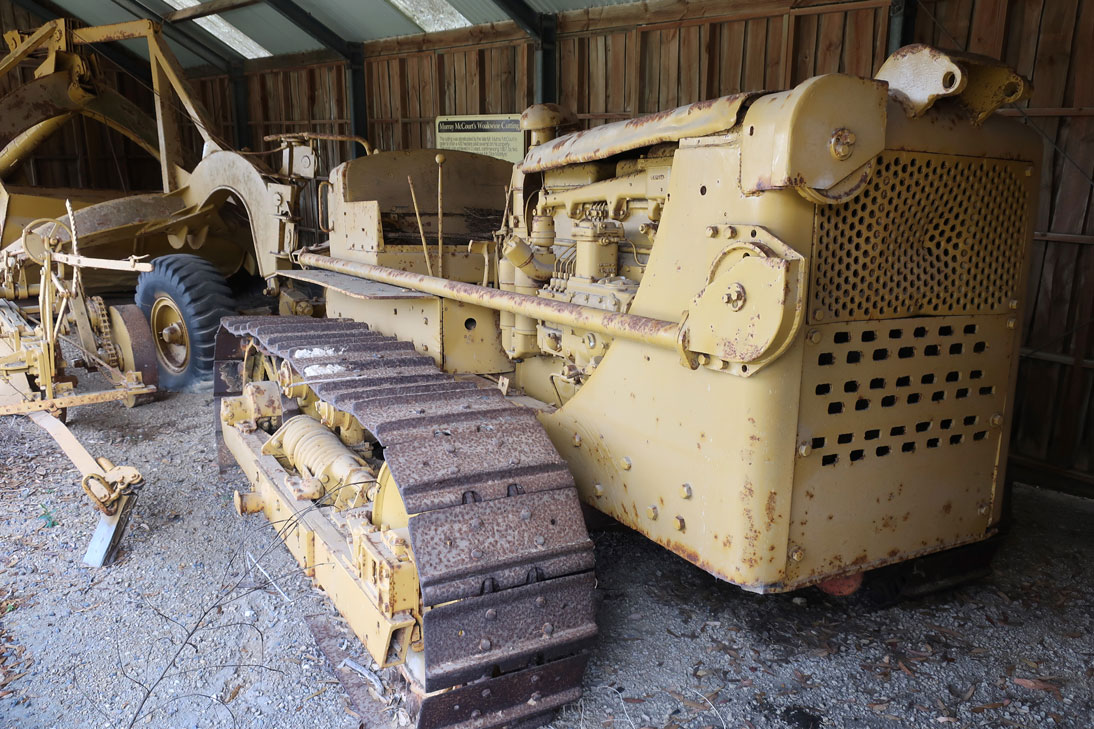
The rain finally arrived over a very dry SA and kept us caravan-bound the next morning, but cleared around midday to blue skies and sunshine. We ventured out to have a look around Robe, although winds up to 35km/h were not conducive to sightseeing. Robe appears to be a well-heeled town of two-storey homes overlooking the ocean, and lots of holiday accommodation. It must be buzzing in summer but at this time of the year it was very quiet.
Royal Circus sits on a grassy knoll and was the original focal point of the town, used by bullock drays during Robe’s days as a busy port. The flagstaff was erected when Governor Robe and Surveyor Burr took the first theodolite bearings for the town in 1846. It also features a cannon, believed to be from the Dutch ship Koning Willem II which came to grief during a storm in the bay in 1857, resulting in the loss of 16 crew members. Busts of explorers Nicolas Baudin, who first charted the bay in 1802, and Matthew Flinders, who visited a few days later, also occupy pride of place in the roundabout.
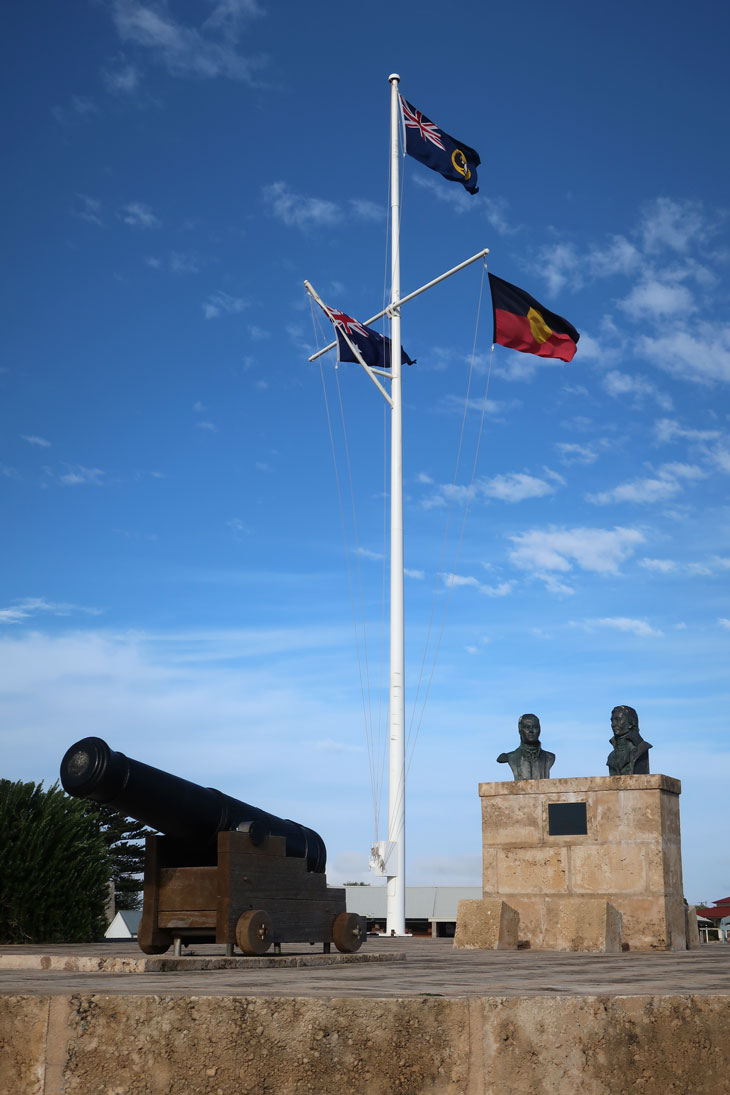
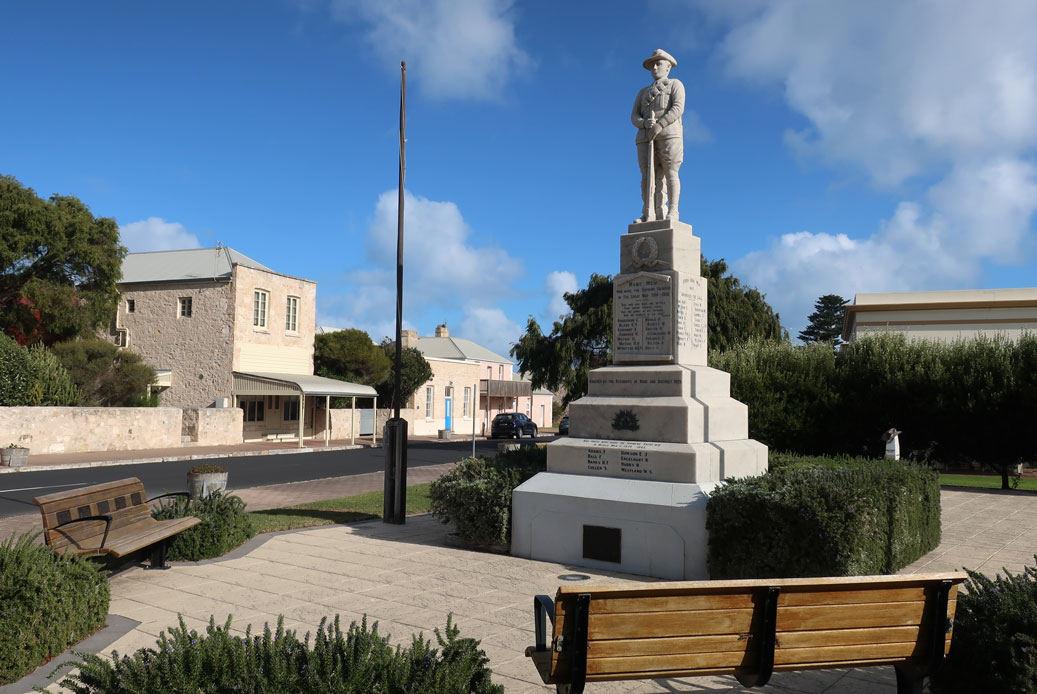
Customs House was erected in 1863 to serve one of the busiest ports on the southern coast, and for several years the revenue collected there was second only to Pt Adelaide. It closed in 1888 and is now the Maritime Museum. Some 16,500 Chinese landed at Robe on their way to the Victorian goldfields, rather than pay the poll tax of £10 at Victorian ports, and the Pai Fang Welcoming Gate stands in the ocean nearby to mark their arrival.
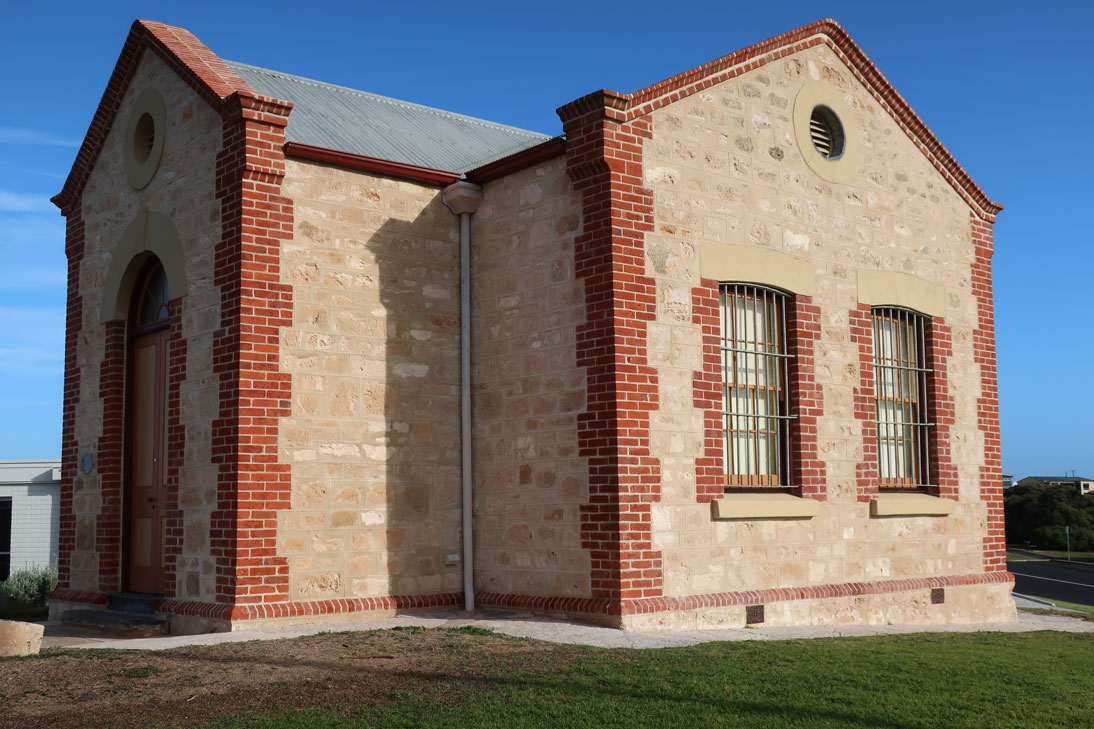
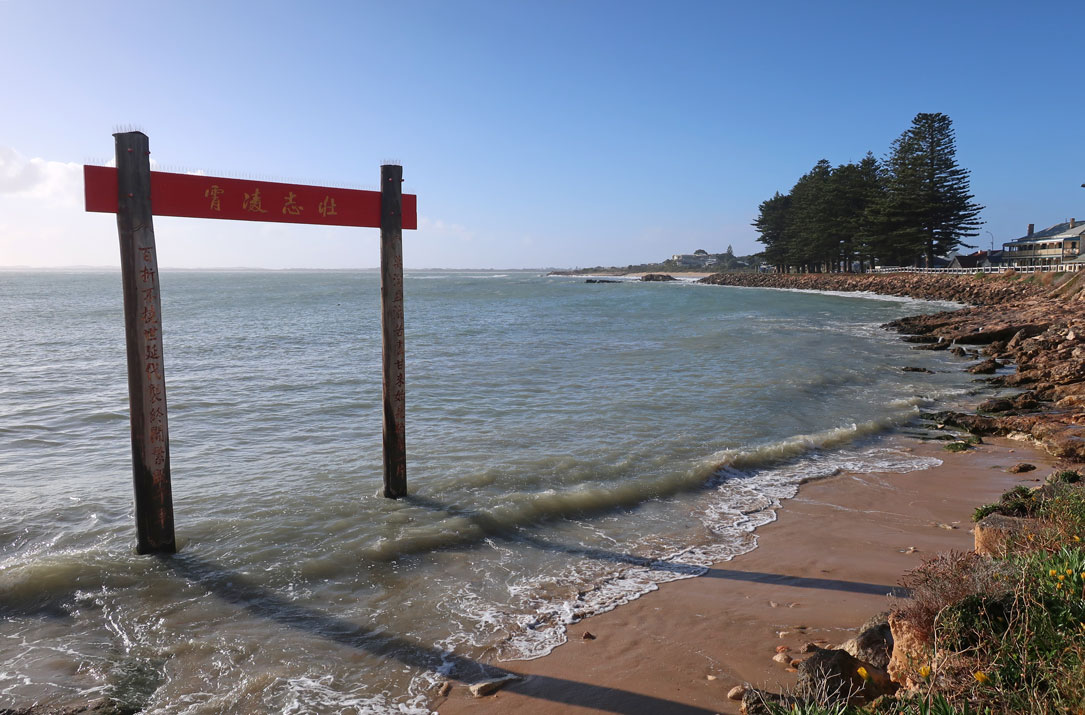
The Old Gaol opened in 1861 and consisted of four holding cells, a receiving yard and a keeper’s residence. It was closed 20 years later and fell into disrepair, the stone eventually being used as road rubble.

The Obelisk sits on the edge of a crumbling limestone cliff and was constructed in 1855. It was a landmark for ships to navigate the entrance to Guichen Bay and stored rocket-fired lifesaving equipment for stricken ships. Standing at a height of 12m it was easily visible 20km out to sea. By contrast the very modern lighthouse, opened in 1973, is a 19m star-shaped tower standing at an elevation of 63m and visible for 39km.


Our next destination was Kingston SE (to distinguish it from Kingston on Murray in the Riverland), situated just 43km north of Robe on Lacepede Bay. It was founded in 1858 and is a well-presented town with many lovely historic buildings including the Post Office, built in 1867. Dotted around town are painted and ceramic murals, one featuring the local CWA.

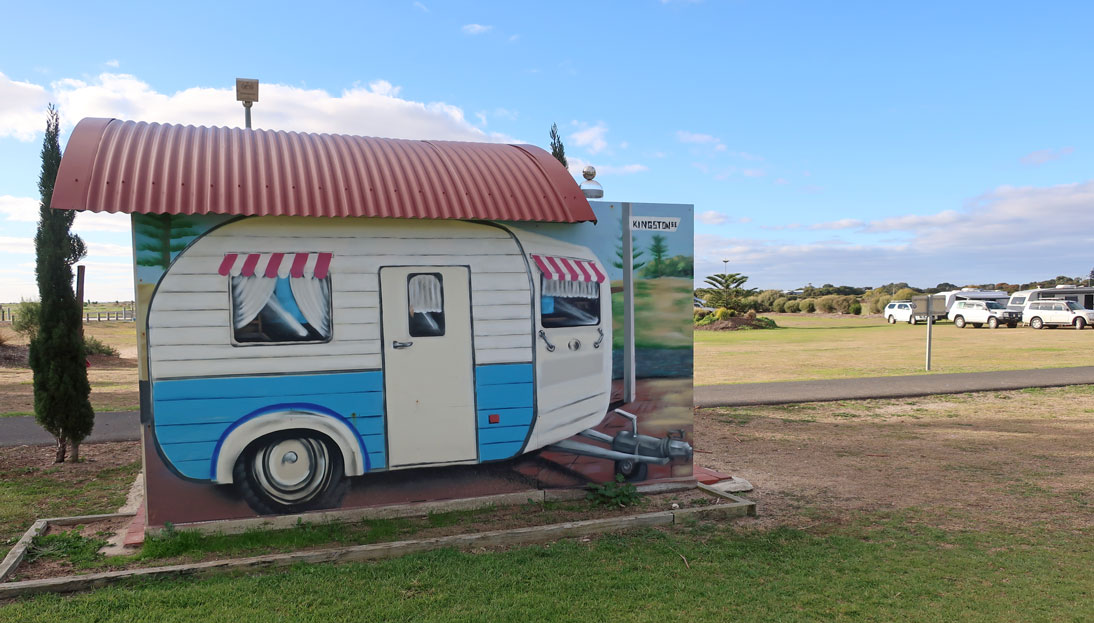
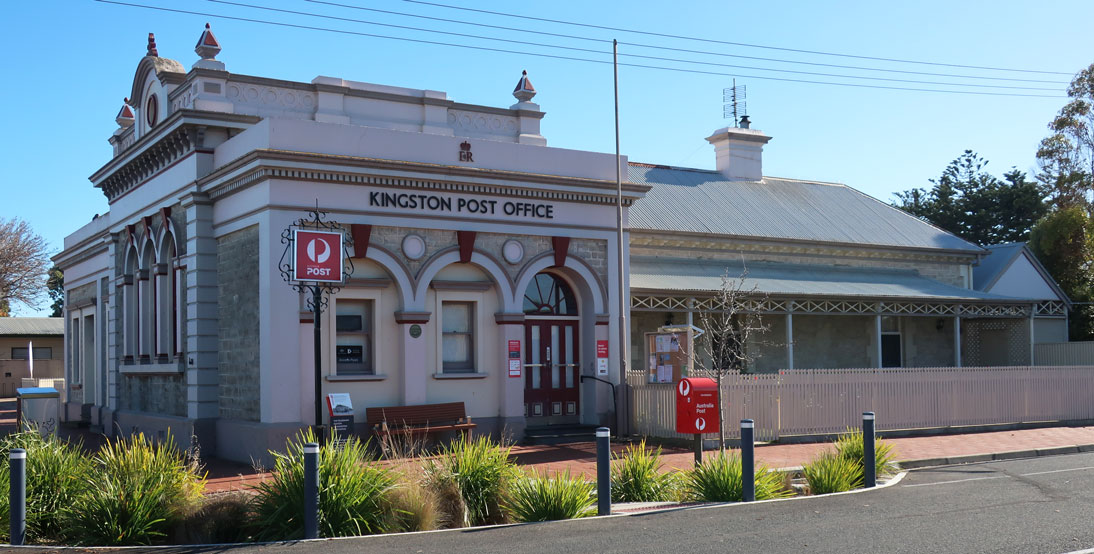
Sitting at the entrance to town is Larry the Lobster, built with steel frame and fibreglass shell, standing 17m high, 15.2m long and 13.7m wide and weighing 4 tonnes. It is regarded as one of the most impressive of Australia’s ‘Big Things’. Nearby is the Sundial of Human Involvement, which works on the same principle as the one at Hamilton. When this Analemmatic Sundial was built in 1990 it was one of just eight in the world.


Kingston is now home to the Cape Jaffa Lighthouse which was originally built on a reef 7km off Cape Jaffa, and opened in 1872. The lighthouse was a prefabricated cast iron structure, built in Britain and shipped to SA. It stood 41m high and contained an eight-room dwelling to accommodate two lighthouse keepers and their families, with enough stores to last several weeks. The lantern could be seen for a distance of 40km. It was decommissioned in 1973 and moved to Kingston for the National Trust, necessitating the building of the new lighthouse at Robe.
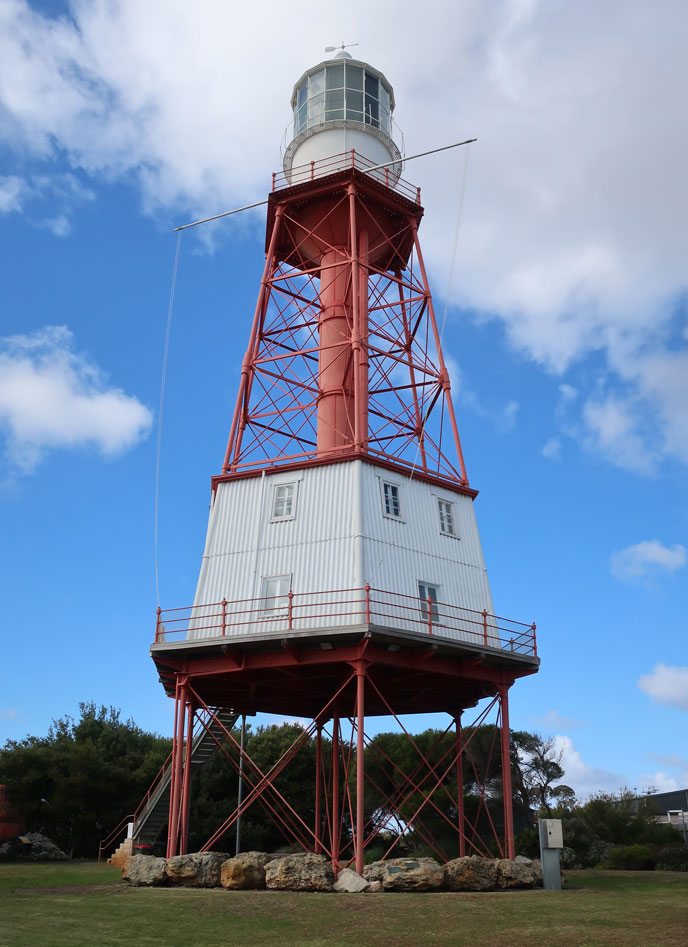
Lacepede Bay is so shallow that when the first jetty was built in 1864-65 it was 155m long and ended in 1m-deep water. A second jetty, 1,432m long, was built in 1876 and reached water just 5m deep. The jetties were twice wrecked by storms and the current jetty is what remains of the original. Much of its length traverses sand dunes and seaweed-covered beach, and the water was very murky after the storms of the last few days.
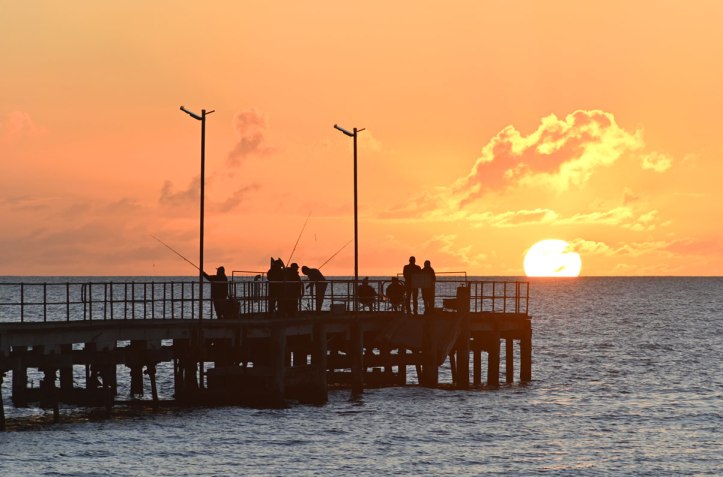
Thanks Julie. The mystery is now solved for me why the SE after Kingston.
LikeLike
My aim is to inform! Personally I think they should call it Kingston on Sea but it’s been SE since 1940. 🙂
LikeLike